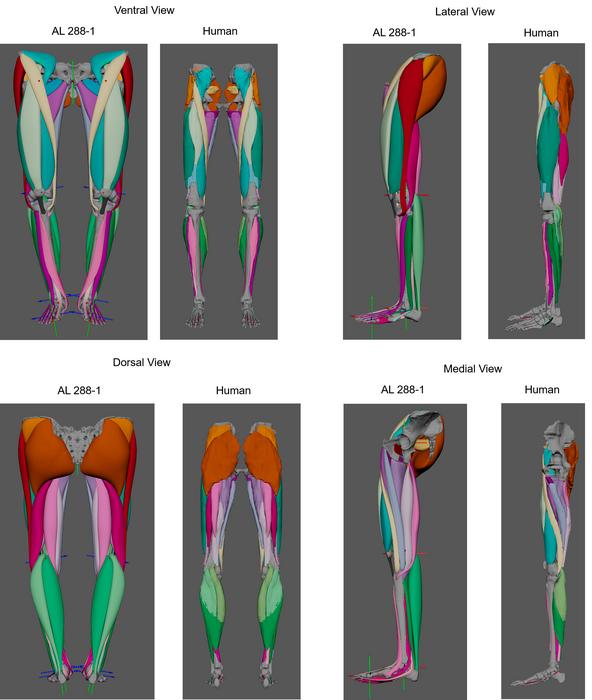Scientists have recently looked at the bones of “Lucy,” a world-famous set of early human ancestor remains, and found further evidence that she could walk upright just as effectively as modern-day Homo sapiens. Considering she wandered about Earth 3.2 million years ago, that’s a remarkable discovery that helps to illuminate one of the most important steps in human evolution: bipedalism.
The remains of Lucy were discovered in 1974 in the Awash Valley of Ethiopia. She was named after the Beatles song Lucy in the Sky with Diamonds, which was repeatedly playing on the researchers’ speakers during their expedition.
She belonged to the species Australopithecus afarensis, a distant relative of us that lived in East Africa around 3 to 4 million years ago. To our eyes, the species would like fairly “primitive” – Lucy was just 1 meter (3.5 feet) tall, weighed around 28 kilograms (61 pounds), and had a tiny brain roughly a third of the size of ours.

How the legs of Lucy (left) compared to those of a modern human (right).
Image credit: Dr Ashleigh Wiseman
The team managed to recover 40 percent of her skeleton, making the specimen one of the most remarkable sets of hominin remains ever discovered from this distant period.
Certain details about the species remain unclear, however. One point of debate is whether she could walk upright or if her movement was more akin to a knuckle-dragging chimp. Most believe her species was bipedal, although a 2016 study threw doubt on this by claiming her remains suggest the species were primarily tree-dwelling creatures.
In a push to settle the debate, scientists at the University of Cambridge analyzed her skeleton to create a digital model of the hominin’s lower body muscle structure. Using medical scans of modern humans’ bones and muscles, they recreated 36 muscles in each leg and worked out how the limb would naturally move.
This, they conclude, provides sturdy proof that the species was bipedal just like us.
“Lucy’s ability to walk upright can only be known by reconstructing the path and space that a muscle occupies within the body,” Dr Ashleigh Wiseman, study author from Cambridge University’s McDonald Institute for Archaeological Research, said in a statement
“We are now the only animal that can stand upright with straight knees. Lucy’s muscles suggest that she was as proficient at bipedalism as we are, while possibly also being at home in the trees. Lucy likely walked and moved in a way that we do not see in any living species today,” Wiseman added.
“Australopithecus afarensis would have roamed areas of open wooded grassland as well as more dense forests in East Africa around 3 to 4 million years ago. These reconstructions of Lucy’s muscles suggest that she would have been able to exploit both habitats effectively.”
The question of Lucy’s bipedalism has some pretty fascinating implications. As this study affirms, it suggests that bipedalism evolved before an increase in brain size. Could it be that our intelligence evolved as a result of our ability to walk upright? It’s not certain, but specimens like Lucy might hold the answers.
The new study is published in the journal Royal Society Open Science.
Source Link: “Lucy” Walked Upright 3.2 Million Years Ago, New 3D Model Shows